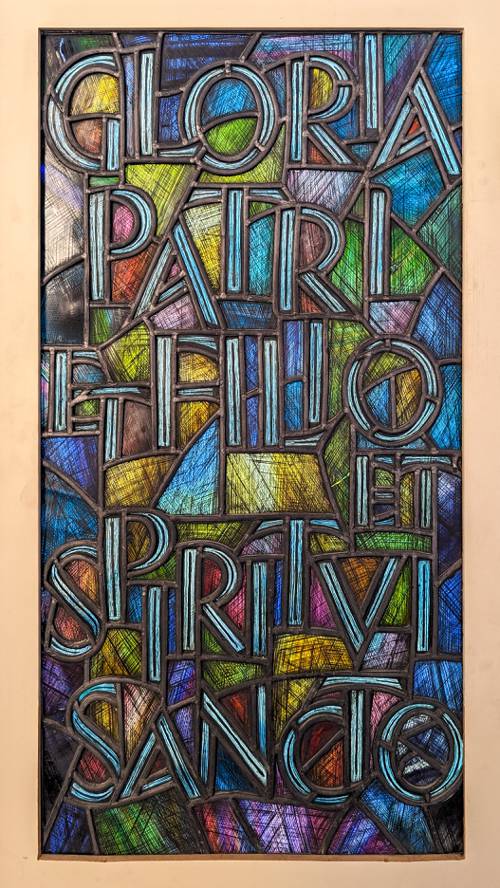
FAQ About The Role of Typography in Shaping National Identities

What is typography and why is it important in national identity?
Typography refers to the art and technique of arranging type to make written language legible, readable, and visually appealing when displayed. It plays a pivotal role in national identity because it reflects the cultural values, heritage, and distinct characteristics of a nation. Typographic choices can influence perception, evoke emotions, and contribute to a coherent national brand, impacting everything from government communications to commercial branding.

How can typography reflect cultural values?
Typography can reflect cultural values through fonts and styles that embody traditional cultural aesthetics or modern societal values. For instance, typefaces can incorporate cultural motifs, historical scripts, or regional symbols that resonate with a nation's history and societal ethos. By using culturally significant typefaces, national brands and institutions can invoke a sense of pride, heritage, and identity among citizens.

What role does typography play in political movements?
Typography is crucial in political movements as it strengthens visual messaging and aids in creating a cohesive identity for the cause. A well-chosen typeface can convey the movement's tone, urgency, and objectives, making slogans and posters more impactful. Historically, revolutionary typography has been used to inspire and mobilize the masses, providing an immediately recognizable visual language for political messaging.

Can you give examples of typography influencing national branding?
One notable example is Switzerland, where the use of Helvetica font has become synonymous with Swiss efficiency and clarity, influencing the country’s branding on an international scale. Similarly, the use of Blackletter typefaces has been historically tied to German national identity. Such typographic choices help establish a recognizable national brand that can be utilized across various platforms and media.

How have digital technologies impacted typography's role in national identities?
Digital technologies have expanded the role of typography in shaping national identities by democratizing font design and allowing for more localized and personalized typographic expressions. Nation-specific typefaces can be easily created and distributed through digital platforms, enhancing the ability of countries to project their cultural aesthetics globally via digital media.

What are some challenges in using typography to shape national identities?
Challenges include balancing modernity with tradition, avoiding stereotypes, and ensuring accessibility and inclusivity in typographic designs. Additionally, there is the difficulty of creating a typeface that resonates with diverse groups within a nation and adapting to a global audience while maintaining cultural authenticity.

How does typography impact social movements?
In social movements, typography serves as a powerful tool for expression and mobilization. Fonts and styles are carefully chosen to evoke emotions, communicate urgency, and enhance the memorability of slogans. Bold and distinct typefaces can symbolize resistance and contribute to the visibility and recognition of social causes, thus playing a crucial role in rallying support.

Can typography be used to create inclusivity within a nation?
Yes, typography can promote inclusivity by incorporating diverse scripts and languages, ensuring accessibility for people with visual impairments, and reflecting the multicultural aspects of a nation. Thoughtful typographic designs consider the multiplicity of identities within a nation and strive to foster a sense of belonging and representation for all demographic groups through type choice and application.

What is the relationship between typography and national symbols?
Typography and national symbols often work hand in hand to create a coherent visual identity for a nation. National symbols can be integrated into typefaces to reinforce national narratives and values. For instance, incorporating elements of a national emblem into a type design can amplify the symbolism and strengthen its association with the national identity.

How do historical events influence typographic choices in national identity?
Historical events significantly shape typographic choices as they often lead to a reevaluation of national symbols and identity. After significant events, such as revolutions or independence movements, countries may adopt new typefaces that reflect their newfound identity or aspirations. Typography acts as a visual commemoration of such events, capturing the spirit of the time and contributing to the narrative of national rebirth or change.

Are there any famous typefaces associated with specific countries?
Yes, there are several iconic typefaces associated with specific countries. For instance, Helvetica is closely linked to Switzerland, reflecting its design ethos of clarity and precision. Similarly, Johnston Sans is associated with the London Underground and is seen as a symbol of British design. These typefaces not only serve practical purposes but also become a part of the nation's cultural identity.

How do government institutions use typography in identity formation?
Government institutions often use typography strategically to present official documents, public communications, and digital interfaces, ensuring they align with the national identity and values. The consistent use of specific fonts across government platforms reinforces the authority and trust in public-facing communications. Additionally, these typographic choices can reflect the government’s vision and ethos, further solidifying the national brand.

What influence does colonial history have on typography in shaping national identities?
Colonial history can significantly impact typography, as nations often inherited typographic styles and practices from their colonizers. Post-independence, countries may strive to reclaim and redefine their national identity through new typographic styles that break away from colonial influences. This process can involve revitalizing indigenous scripts and creating new fonts that reflect local heritage, aspirations, and autonomy.

How does globalism affect national typographic identities?
Globalism poses both challenges and opportunities for national typographic identities. While global influences can lead to a homogenization of typographic styles, they also provide opportunities to showcase distinct national aesthetics on an international stage. Nations can leverage emerging global platforms to maintain and promote unique typographic identities that emphasize cultural pride and diversity.

Can typography aid in preserving indigenous languages and scripts?
Yes, typography can play a crucial role in the preservation and revitalization of indigenous languages and scripts. By developing and promoting typefaces that support indigenous scripts, typography can assist in educational and cultural initiatives aimed at maintaining linguistic diversity. These efforts help safeguard cultural heritage and promote the use of indigenous languages in both formal and informal contexts.

What is the impact of typography in international diplomacy?
Typography can subtly influence international diplomacy by projecting a nation's identity through formal communications and diplomatic channels. A carefully chosen typeface in diplomatic documents and statements can express professionalism, sincerity, and the values that a nation stands for, thus enhancing its international image and relations.

How do social media platforms use typography to influence national identities?
Social media platforms utilize typography through the customization of fonts and text styles that resonate with national identities. They enable users to express national pride and individuality by offering localized fonts and features. This not only reinforces personal connections to national identity but also supports the dissemination of culturally resonant content globally.

Can typography serve as a bridge between traditional and modern cultural elements in national identity?
Typography can effectively bridge traditional and modern cultural elements by merging classical designs with contemporary stylistic innovations. This fusion allows nations to honor their historical heritage while simultaneously embracing modernity, thereby forming a cohesive visual narrative that accommodates both past and present cultural expressions within their national identity.

How is typography used in national festivals and celebrations?
During national festivals and celebrations, typography is often used to create festive atmospheres by incorporating traditional symbols and vivid colors into type designs. Special typefaces are often commissioned for event posters, online promotions, and decorative elements, providing a distinctive visual identity that captures the spirit and theme of national celebrations.

What is the future of typography in shaping national identities?
The future of typography in shaping national identities likely involves an increased emphasis on personalization, digital innovation, and inclusivity. As technology advances, typographic design may become more interactive and multisensory, offering dynamic representations of national identities that are both traditional and forward-looking. This evolution will continue to play a significant role in communicating and reinforcing national culture and values.
